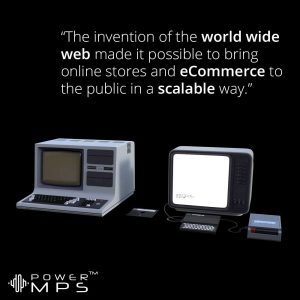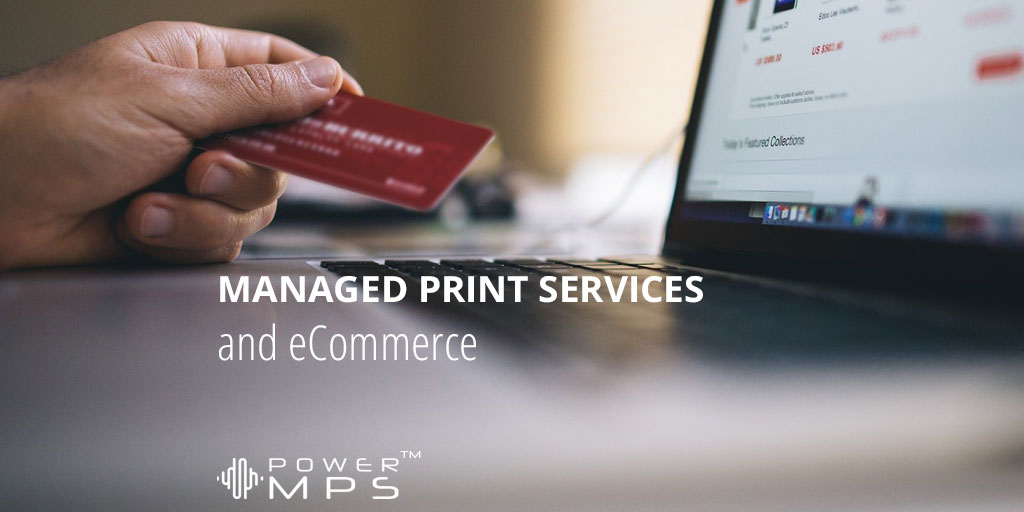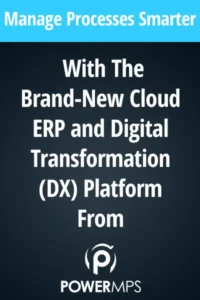Bob had a car delivered today. He ordered it online from one of those new car purchase websites to find the specific make, model, and features he desired. He raved about how he avoided dealing with salespeople and could check inventory from all over the country. But it makes you think, what can’t you order online?
Nowadays, you can have almost any item delivered from an eCommerce website right to your door in as little as a few hours with the click of a button. For food ordering services, you can have something delivered within 15-20 minutes. Consumers have become reliant on eCommerce for everything from furniture to groceries. And many intelligent businesses have taken advantage of this opportunity to streamline their company structure and expand their customer base through online sales.
But the journey to today’s eCommerce boom, where the likes of Amazon and eBay are household names, took over half a century and the hard work of several innovative computer and internet pioneers. At the point where the likes of Amazon, Walmart, and others are making it challenging for ink and toner suppliers to remain profitable, MPS e-commerce plays a significant role in how managed print services can thrive.
In The (e)Beginning Of E-commerce
Long before today’s speedy online communication technology, there was Electronic Data Interchange or EDI. While this system is not attributed to a specific inventor, Ed Guilbert is generally recognized as the “Father of EDI.” Expanding on systems he originally built while serving in the military, Guilbert made several contributions to making data transmission possible. The first EDI messages were transmitted in 1965 for the USA transportation industry for shipping manifests using telex messages (a system similar to the wired telephone only connected to printers). It took approximately 2 minutes to send a single page of information.
EDI Was Created
The creation of EDI allowed for communications between multiple companies’ computer systems and standardized electronic transactions between customers and vendors. Eventually, this technology would lead to File Transfer Protocol (FTP) development and other forms of computer-to-computer data transmission.
At the same time that EDI was being developed, the US government was worried about a Soviet attack on the nation’s telephone system. The Department of Defense’s Advanced Research Projects Agency (ARPA) and MIT were tasked to develop a communications system that would operate even when the phones were down to address this concern.
Network Communications
The resulting network of “node-to-node” communication, dubbed ARPAnet, delivered its first message on October 29, 1969. By 1971 the original network of four computers had pulled in several other networks, including London’s University College, the Royal Radar Establishment in Norway, and the University of Hawaii’s ALOHAnet. But the more individual networks pulled into the system, the more difficult it became to integrate them into a cohesive whole.
This issue continued until the late 1970s when a computer scientist named Vinton Cerf found a way for individual computers to communicate using Transmission Control Protocol or TCP. He later expanded on his work by creating Internet Protocol, introducing what we now refer to as TCP/IP.
Getting To The Customer
While the foundations for interconnected computing were in the works, computers were already becoming a growing standard business. And insightful entrepreneurs such as Dr. John R. Goltz and Jeffrey Wilkins saw a big opportunity in 1969 when they founded CompuServ as a computer time-sharing service. Based in Columbus, Ohio, this revolutionary company would become the first to offer email, technical support for personal computers and, in 1980, the first online real-time chat services. CompuServ would compete with other big names such as AOL and Prodigy to provide access to the first forums and eCommerce websites.
Online Shopping A Huge Goal
Just as Wilkins and Goltz saw an opportunity in providing computer and network access, so English inventor Michael Aldrich saw the possibilities for a new, interactive medium in the form of online shopping. In 1979 he connected a television to a transaction-processing computer using a domestic telephone line. The system allowed a company to connect its networks with suppliers, distributors, and customers to process transactions electronically in real-time. In 1980, Aldrich expanded on his initial invention to create the Teleputer, a precursor to our current smart TVs, and the interactive broadband local loop cable television in 1981.
But it would take one more world-changing invention before eCommerce could fully reach the general public – the world wide web.
The Birth Of Modern Ecommerce
 In 1991 Swiss computer programmer Tim Berners-Lee discovered a way to go beyond simply sending files from one location to another. Instead, he built a system that would place files, documents, and other data into a “web” of information that anyone could retrieve. At the same time, Berners-Lee initially invented the first web browser called “WorldWideWeb” but eventually renamed Nexus.
In 1991 Swiss computer programmer Tim Berners-Lee discovered a way to go beyond simply sending files from one location to another. Instead, he built a system that would place files, documents, and other data into a “web” of information that anyone could retrieve. At the same time, Berners-Lee initially invented the first web browser called “WorldWideWeb” but eventually renamed Nexus.
The invention of the world wide web made it possible to bring online stores and eCommerce to the public in a scalable way. As expected, this spawned a wealth of new businesses, including eCommerce giants such as eBay, founded in 1995 by Pierre Omidyar. Jeff Bezos, the founder of Amazon, began selling books online from his garage that same year.
Online Sales Scale
By 2014 online sales in the USA were over 100 billion dollars. By 2018 they were over 500 billion. Then 2020 forced many physical retail businesses to find new ways to sell their goods or risk shutting down completely. To survive, ink and toner companies found fast, easy ways to move their businesses online using simple, all-in-one MPS solutions like PowerMPS.
Using easy-to-manage cloud-based platforms to deliver eCommerce solutions allowed companies to build an online store onto their new or existing website so they could continue safely and legally reaching current clientele. With features like real-time product shipment tracking and product and service request management, it also helped streamline backend operations to help save time and money, while providing much-needed management services to customers.
Beyond the ability to continue serving existing clients, truly robust eCommerce solutions also offer pricing rules and levels and email marketing options. These tools allowed even the most traditional companies to not only survive online but grow their customer and revenue base – quickly, securely, and successfully. By the end of 2020, eCommerce sales exceeded 861 billion dollars – over 21% of all retail sales
The Future Of MPS eCommerce
Online sales were gaining in popularity before the pandemic. But 2020 trained many consumers and businesses to rely on these types of services. Savvy companies like ink, toner, and print service businesses, while relieved to reopen their traditional sales and operations locations, recognize that eCommerce is already an integral part of how retail will continue to grow. Today it is estimated that eCommerce in the USA could account for over 1 trillion dollars within the next 1-3 years and more than half of all retail sales within the next decade. Implementing integrated eCommerce solutions like PowerMPS was a lifeline a year ago. Now it is fast becoming a safeguard for the future.







